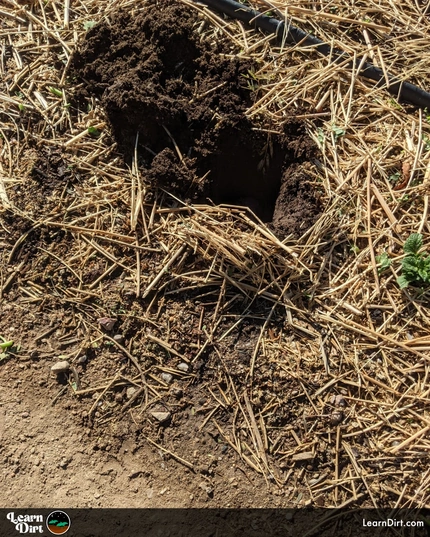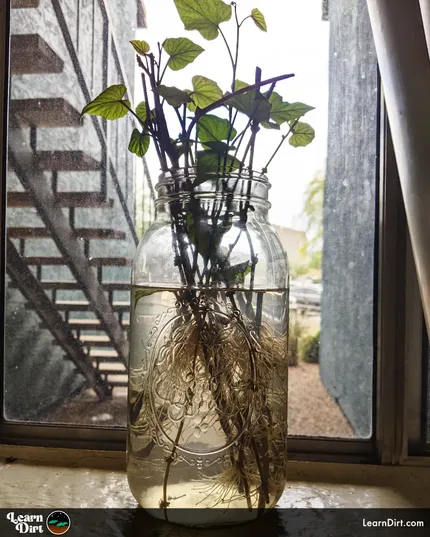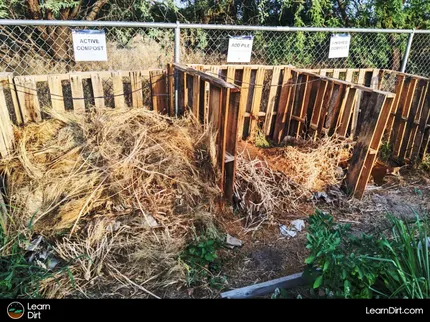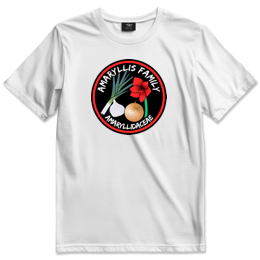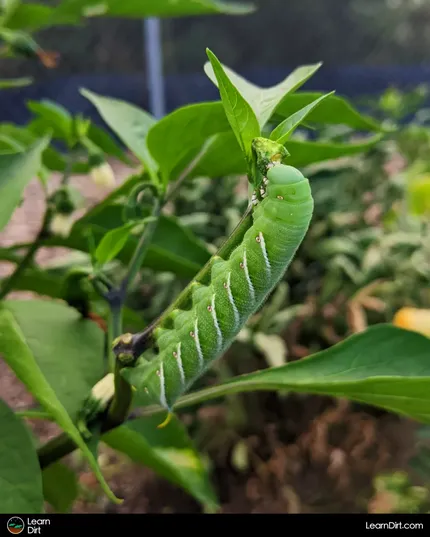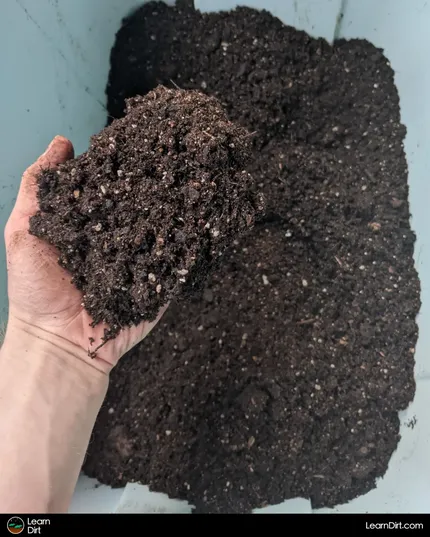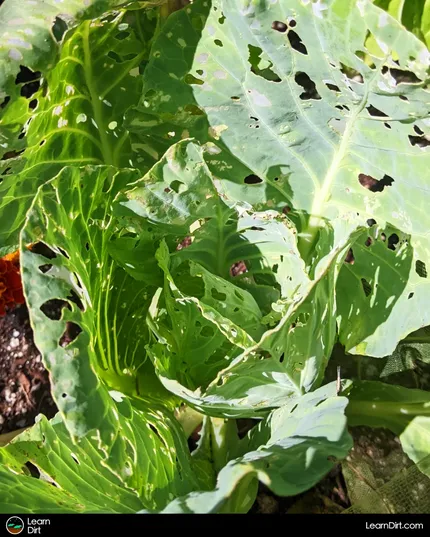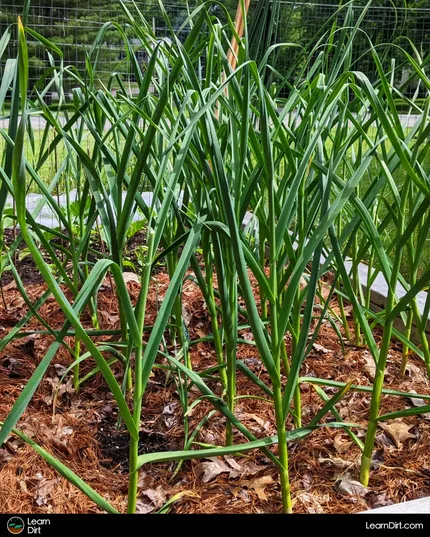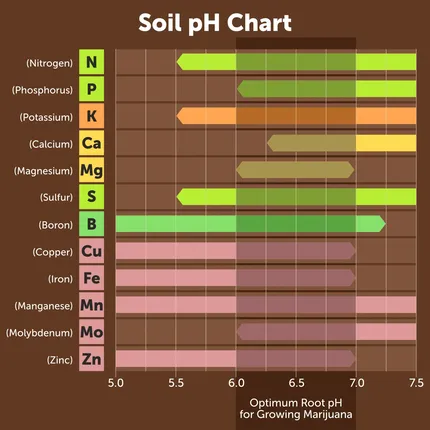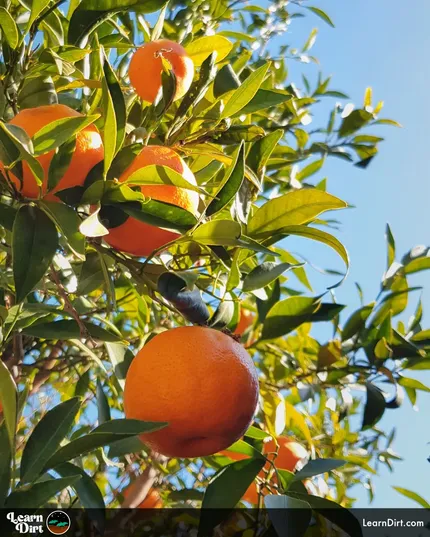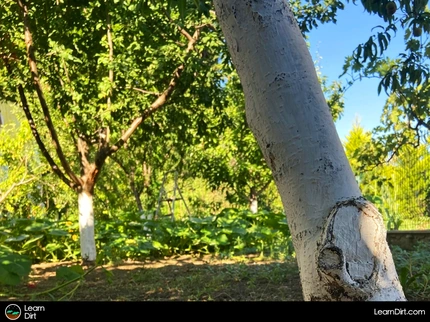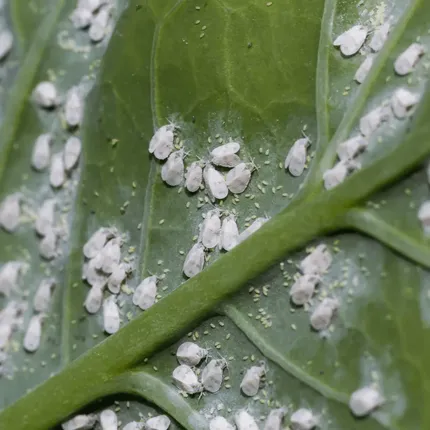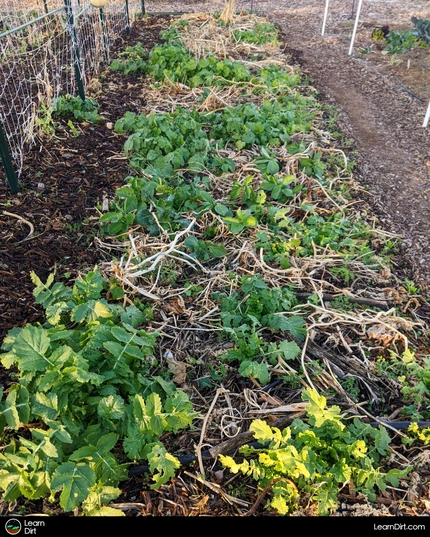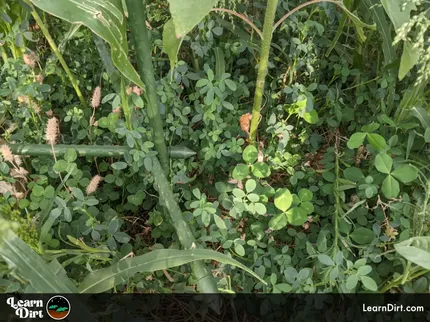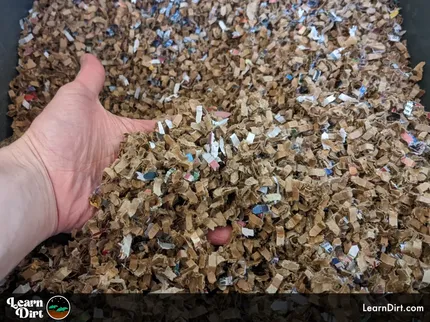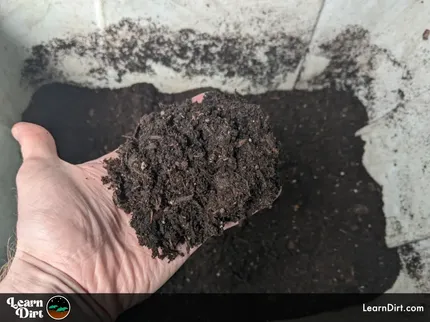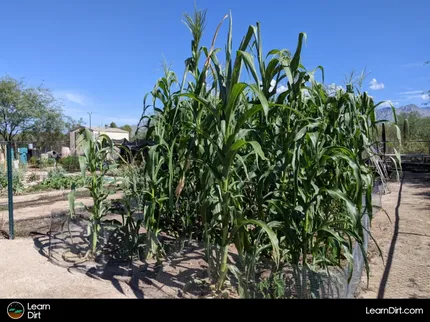Table of Contents
- Do Cover Crops Work Anywhere?
- Can You Grow Cover Crops During Any Season?
- What Cover Crops Will Work in Your Region
- Cover Crops for Specific Climate Conditions
- Cover Crops for Specific Soil Types
- Cover Crops for Specific Microclimates
- Further Reading
* Our articles never contain AI-generated slop *
If you're looking to get into cover crops but aren't sure which ones to use, you're in the right place. Here we'll discuss how to determine the best cover crops for your region, as well as some practical tips for getting started cover cropping.
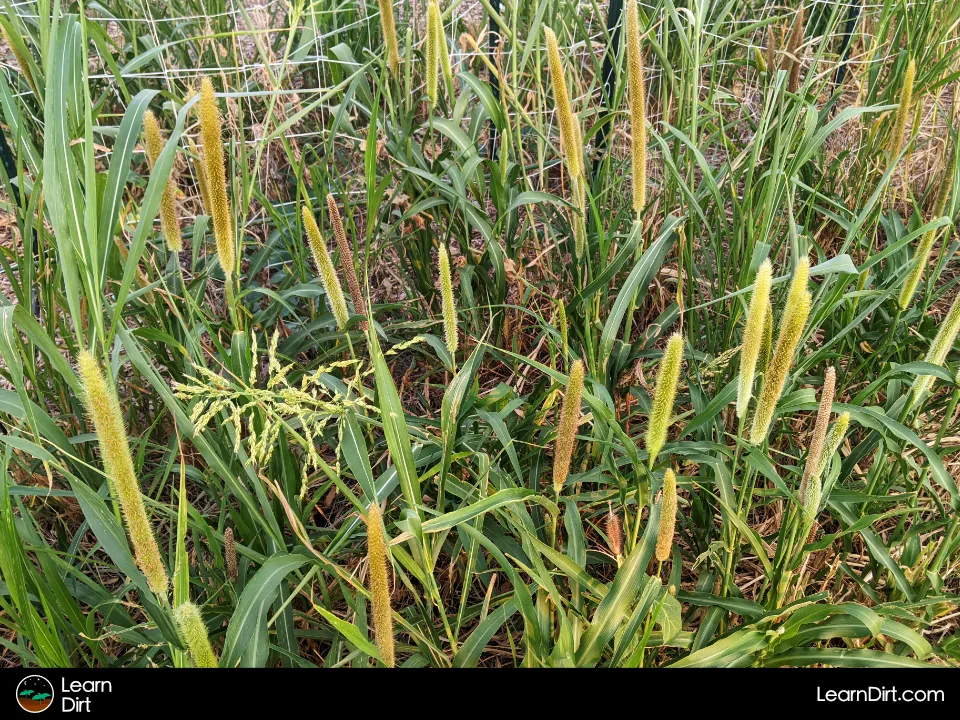
Unsure what cover crops are or why they're used? Check out our beginner's guide to cover crops first, and then come back when you're ready to pick some specific covers for your location.
Do Cover Crops Work Anywhere?
Just like herbs, fruits, and veggies, there are some cover crops which will grow in your region and some that won't. Each cover crop has specific needs and tolerances, so it's important to match your cover crops to your climate.
Disclaimer: This post may contain affiliate links. Refer to the privacy policy for more information.
Learning about what each cover requires to thrive, as well as their benefits and uses will help to inform your choice of which covers you want to grow.
Can You Grow Cover Crops During Any Season?
Many cover crops are short-lived annuals which are planted each season, and should be aligned with the temperatures and conditions that season will present.
What Cover Crops Will Work in Your Region
The absolute easiest way to determine which cover crops will thrive in your region is to try a mix!
Grab a diverse cover crop mix like this for the warm season, or this for overwintering and scatter them around liberally.
By broadcasting a cover crop mixture, covering them with a bit of compost or mulch (optional), and watering daily for a week or two - you'll quickly find out which ones will grow and thrive and which just aren't going to work for you.
Be sure to try this in every season, and observe which covers grow best at which times of the year - and which simply won't grow in your climate.
Join The Grower's Community
A free & open space for anyone who is passionate about cultivation 🌱
Check It Out!
Once you've done some trials and made some observations, you'll be much more informed for buying larger quantities of specific covers that you choose, and applying them at the correct times of the year for your region.
If you want to dig into various climate types and the cover crops which may work there, keep reading.
Cover Crops for Specific Climate Conditions
Every climate is different, and not every cover crop will tolerate yours. Identify your climate conditions below to get an idea of which cover crops may do well for you:
Frost-Tolerant Cover Crops
Heat-Tolerant Cover Crops
- Sudangrass
- Sorghum
- Sorghum-Sudangrass
- Pearl Millet
- Cowpea
- Sunn Hemp
- Teff Grass
- Pigeon Pea
- Lablab
If you grow alfalfa or cowpea, mixing some rhizobium inoculant in with the seeds if they aren't already pre-inoculated is a great way to boost their nitrogen production.
Flood-Tolerant Cover Crops
- Red Clover
- Berseem Clover
- Annual Ryegrass
- Alsike Clover
- Reed Canarygrass
- Japanese Millet
Drought-Tolerant Cover Crops
- Alfalfa
- Sudangrass
- Sorghum
- Sorghum-Sudangrass
- Pearl Millet
- Cowpea
- Lentil
- Mung Bean
- Safflower
Cover Crops for Moderate Climates (Temperate Conditions)
Cover Crops for Windy Climates
- Hairy Vetch
- Cereal Rye
- Winter Triticale
- Barley
- Sorghum-Sudangrass
- Winter Wheat
Cover Crops for High Altitude
High altitudes often have cold temperatures, strong winds, thinner air, increased UV radiation, greater temperature fluctuations, and a shorter growing season as compared to lower elevations. The following cover crops are hardy enough to tolerate these conditions:
- Alfalfa
- Winter Wheat
- Winter Rye
- Triticale
- Oats
- Buckwheat
Cover Crops for Specific Soil Types
If you're not sure what type of soil you have, check out our guide on performing a soil composition test.
It's also important to do a quick soil pH test, easily performed with a digital pH tester and some neutral (7.0) distilled water. Simply mix in a soil sample and take a reading.
Once you know what type of soil you're working with, refer to the following specific soil types for cover crops which will tolerate or even thrive in your soil type:
Best Cover Crops for Sandy Soils
Best Cover Crops for Clay Soils
- Daikon
- Annual Ryegrass
- Alfalfa
- Sweet Clover
Best Cover Crops for Saline Soils
- Barley
- Tall Wheatgrass
- Rape/Canola
- Sweet Clover
- Birdsfoot Trefoil
Best Cover Crops for Alkaline Soils
Soil which has a pH above a 7.0 can be too alkaline for most veggies and cover crops to tolerate. Use a digital pH meter to measure a soil sample mixed in some neutral (7.0) distilled water to get a reading on your soil pH.
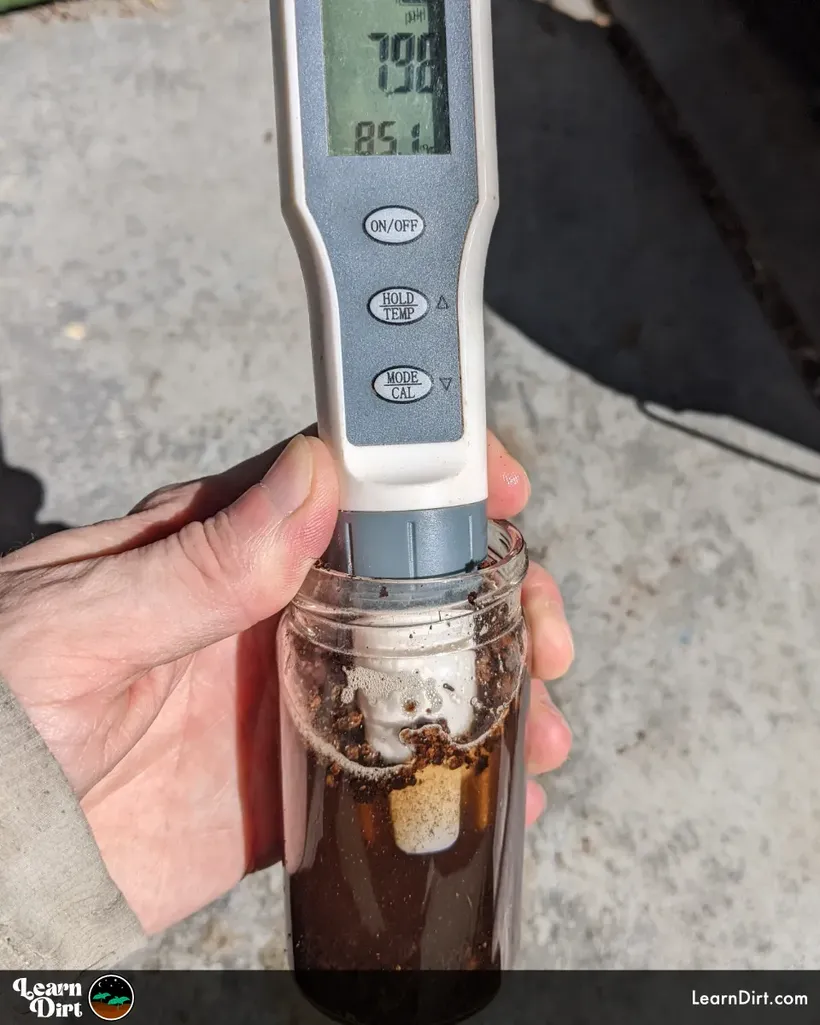
If soil is too alkaline, you'll want to work on lowering the pH over time to get your alkalinity within a reasonable range. Applications of elemental sulfur are a big help here, though this will take at least a couple of years for the pH to drop. Continue measuring pH levels and applying sulfur each season until conditions improve.
In the meantime, you can plant cover crops which tolerate alkaline soils until your soil pH drops to a level that a broader range of cover crops and veggies can function in. Try some of these:
- Sweet Clover
- Alfalfa
- Barley
- Sainfoin
- White Clover
- Austrian Winter Pea
- Chicory
Best Cover Crops for Acidic Soils
If your soil pH is below a 6.0, it may be too acidic for many veggies and cover crops. A digital pH meter and a soil sample mixed in some neutral (7.0) distilled water will give you a quick idea of your soil pH.
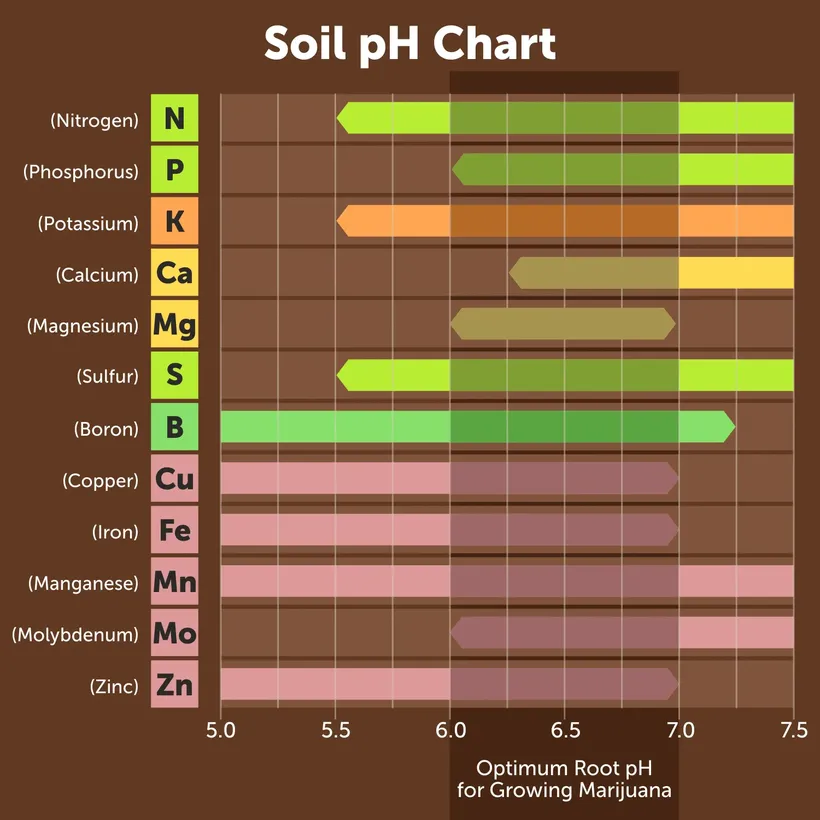
Acid levels in soils can be reduced over time through applications of garden lime (calcium carbonate), dolomite lime (calcium magnesium carbonate), wood ash, and compost, though this will take some time.
While you work to increase the pH of overly-acidic soils, you can also utilize these acid-loving cover crops which will tolerate or thrive in the conditions until the pH rises enough for other cover crops to flourish:
- Crimson Clover
- White Clover
- Winter Rye
- Annual Ryegrass
- Hairy vetch
- Oats
- Sorghum-Sudangrass
- Triticale
- Buckwheat
Best Cover Crops for Compacted Soils
While compacted soils can be broken up with heavy tillage ( not recommended ), or utilizing a broad fork, the easiest way to remediate compaction with the least labor is through soil-busting cover crops! The following all do a great job breaking up compacted soils so you don't have to do it manually:
- Daikon
- Rapeseed/Canola
- Alfalfa
- Sweet Clover
- Sorghum-Sudangrass
- Annual Ryegrass
- Cereal Rye
For further reading, check out our guide on using cover crops to break up compacted soil
Best Cover Crops for Polluted Soils
Soils polluted with heavy metals, commercial waste, or synthetic fertilizers can be remediated over time through the strategic use of cover crops which scavenge some of these elements and chemicals from the soil and uptake them. Some of the following can be helpful for polluted soil remediation:
- Sunflowers
- Mustard
- Alsike Clover
- Sudangrass
- Alpine Pennycress
- Rape/Canola
- Hemp
For heavily-polluted soils, frequent soil testing is essential and some plants which pull heavy metals and chemicals from the soil must be disposed of after remediation.
Best Cover Crops for Coastal Soils
Coastal soils are often sandy, windy, and may have a high saline content or saltwater spray. They may also have soil which needs extensive root systems in order to stabilize. These covers are the most likely to tolerate these conditions:
- Ryegrass
- Winter Rye
- Triticale
- Barley
- Tall Wheatgrass
Cover Crops for Specific Microclimates
Once you've identified your specific region's climate and your local soil type, and the cover crops that may grow well there, you can zoom into the specific microclimates you find across your land. Different areas of your garden or farm will have differing microclimates which allow for a variety of cover crops to grow.
Shady Areas
For areas that get a lot of shade, the following shade-tolerant cover crops make great choices and do not have the light requirements of many other cover crops:
- Red Clover
- White Clover
- Annual Ryegrass
- Hairy Vetch
- Sweet Woodruff
North-Facing Slopes
For North-facing slopes which receive less sunlight (in the Northern hemisphere) and are also typically cooler than other microclimates, consider the following covers:
Dig Cool Merch?
- Winter Rye
- Crimson Clover
- Austrian Winter Pea
- Hairy Vetch
- Annual Ryegrass
South-Facing Slopes
For South-facing slopes which receive the most sunlight and heat (in the Norther hemisphere), consider these sun-and-heat-tolerant cover crops that may do well for you:
- Buckwheat
- Cowpea
- Sunn Hemp
- Lablab
- Pearl Millet
Riparian Zones
In riparian zones alongside streams and rivers, cover crops which tolerate wet conditions and which have root systems capable of stabilizing soils should be utilized. These include:
- Annual Ryegrass
- Reed Canarygrass
- Alsike Clover
- Red Clover
- Winter Rye
Further Reading
To learn more about utilizing cover crops for specific scenarios, we suggest checking out some of our other articles on covers to learn more about them:
- Beginner's Guide to Cover Crops
- Undercrop Guide
- Cover Crops Alongside Main Crops
- Using Cover Crops for Compacted Soil
- How to Terminate Cover Crops
That's all for now, thanks for reading!
If you have any questions, comments, or would like to connect with fellow gardeners, head on over to the forum and post there.

![Black Dirt Live Again [Blue]](/media/product_images/black-dirt-live-again-[blue]_sticker_260x260.png)


